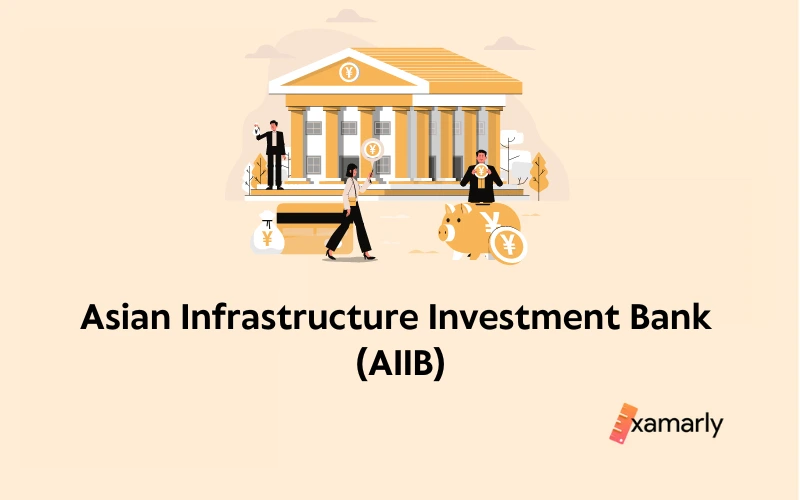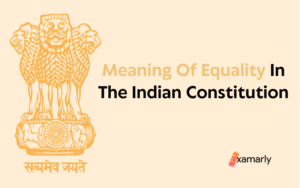The UPSC exam is one of the most prestigious and tough exams to crack in our country.
The Asian Infrastructure Investment Bank for UPSC is an important topic to cover from the point of view of the exam.
This article on the topic of the Asian Infrastructure Investment Bank will be beneficial for aspirants in their UPSC preparation. Here we look at the AIIB and its role in the world economy. You’ll find out why it’s important for India to join.
The AIIB is a relatively new international financial institution established in 2016 with a mission to promote sustainable economic growth, create wealth and improve infrastructure connectivity in Asia and beyond.
In this blog, we will explore the origins and history of the AIIB, its organizational structure, its key priorities and achievements, and its impact on infrastructure development in Asia and beyond.
We will also discuss the challenges and opportunities that the AIIB faces in the future, and the role it can play in promoting sustainable economic development and addressing global challenges.
- Asian Infrastructure Investment Bank for UPSC: Establishment and Members
- Objectives of AIIB
- Governance of AIIB
- Capital and Shareholding of AIIB
- Various Organs of AIIB
- Accomplishments of AIIB
- Relationship between India and the AIIB
- Objections against AIIB
- Conclusion
- FAQs on Asian Infrastructure Investment Bank for UPSC
- What are Paid-Up and Callable capitals?
- Who is the Vice-President of AIIB in 2022?
- What are the differences between AIIB and MDBs governance structures?
- Who are the members of the AIIB?
- What is the AIIB's organizational structure?
- What are the key priorities of the AIIB?
- What is the AIIB's impact on infrastructure development in Asia and beyond?
- What are the challenges and opportunities faced by AIIB?
- How can the AIIB contribute to sustainable economic development?
Asian Infrastructure Investment Bank for UPSC: Establishment and Members
The Asian Infrastructure Investment Bank (AIIB) is a new financial institution that was first proposed by Chinese leader Xi Jinping during the APEC summit in Bali in 2013. Many observers saw this bank as a direct challenge to international lending institutions and saw it as a matter of American foreign policy.
The Asian Infrastructure Investment Bank is a multinational bank, sometimes known as the AIIB. It was founded with the goal of enhancing Asia’s social and economic results. It is established by the AIIB Articles of Agreement, a multilateral treaty. It became effective on December 25, 2015.
The Bank’s membership is made up of the parties to the agreement (57 founding members). Its headquarters are in Beijing, and it began operations in January 2016.
The Bank’s membership has now grown to 103 approved members worldwide representing 65% of the Global GDP and 79% of the global population. The members of AIIB include 14 G-20 countries. Some of the member countries include France, Germany, Italy, and the United Kingdom.
Investing in sustainable infrastructure and other productive sectors in Asia and beyond, AIIB aims to better connect people, services, and markets, affecting the lives of billions and laying the groundwork for a better future.
Objectives of AIIB
- The aim is to support the growth of Asia’s economy in the long run by investing in productive areas such as infrastructure and improving infrastructure connectivity. This will create wealth and prosperity.
- The organization will work in partnership with other bilateral and multilateral development organizations to tackle development challenges, hence promoting regional cooperation and collaboration.
- The institution plans to increase investment from both private and public sources, with the goal of supporting developmental initiatives. In short, it aims to provide capital for development purposes.
- The organization will utilize its resources to fund regional development and promote balanced economic growth. focusing on projects that can benefit the region.
- The AIIB will encourage private investment in projects that contribute to the economic development of the region, particularly where private capital is limited.
Governance of AIIB
Board of Governors:
- Each member country appoints one Governor and one Alternate Governor to the Board of Governors.
- Governors and Alternate Governors are appointed by a member and serve as per their requirements. The Board of Governors has complete authority over the AIIB.
- The Board of Governors may delegate any or all of its powers to the Board of Directors, except:
- The power to admit new members and determine their admission conditions.
- Authority to increase or decrease the Bank’s authorized capital stock.
- Electing the Bank’s Directors and setting the expenses and remuneration for Directors and Alternate Directors.
- The power to elect the President, suspend or remove him from office, and set his remuneration and other working conditions.
- After reviewing the auditors’ report, approve the Bank’s general balance sheet and profit and loss statement.
- Modifying the ‘AIIB Articles of Agreement’.
- Annual Meetings of the Asian Infrastructure Investment Bank:
- In 2016, the AIIB Board of Governors met for the first time in Beijing, China.
- The second took place in Jeju, South Korea in 2017, and the third in Mumbai, India in 2018.
- The AIIB’s first Annual Meeting outside of Asia was held in Luxembourg on July 12-13, 2019.
- 2020 saw the first annual meeting to be held Virtually. In this meeting of stakeholders and experts steps towards building a more resilient and inclusive tomorrow were discussed.
- On October 26-28, 2021, the United Arab Emirates hosted the Sixth Annual Meeting of the Board of Governors via electronic means.
Capital and Shareholding of AIIB
- The original total capital of the AIIB is USD 100 billion, which has been divided into 1 million shares with a value of $100,000 each. 20% of the capital has been paid in, and the remaining 80% is subject to call options.
- The original subscribed capital was divided in half by China’s contribution of USD 50 billion, making China the biggest donor to the Bank.
- India is the second-largest shareholder, with USD 8.4 billion in contributions.
Voting Rights
- China has the most voting shares in the bank, with 26.61%. India, Russia, and Germany are next, with 7.6%, 6.01%, and 4.2%, respectively.
- The voting power in the Bank is broken out as follows: the regional members have 75% of the overall authority. 75% of the voting power in the Bank is held by the members from the regions.
Related Reading: What is ASEAN?
Various Organs of AIIB
The Asian Infrastructure Investment Bank’s composition is as follows:
The Board Of Directors
- The Board of Directors consists of twelve members. Out of these members, nine are elected by the Governors to represent regional members and three are elected by the Governors to represent non-regional members. These twelve members shall not include any members of the Board of Governors.
- These Directors must be well-versed in finance and economics.
- The primary function of the Board of Directors is to carry out all of the powers vested in them by the Governors.
- They are also in charge of the general bank operations, as well as the annual strategy and budget.
Senior Management
- The AIIB shareholders elect a President for a five-year term. The President is in charge of the AIIB’s staff.
- A Vice President is appointed to assist the President and carry out important Bank decisions.
International Advisory Panel
- The President and Senior Management are also assisted by an International Advisory Panel (IAP). The panel is established by AIIB. The President appoints each member of IAP for a two-year term.
- This Panel attends the annual AIIB meeting and also meets annually at the AIIB headquarters in Beijing.
Overall, AIIB members are split into two groups: regional members and non-regional members. All members of the World Bank and the Asian Development Bank can join.
The Asian Infrastructure Investment Bank (AIIB) is a multilateral development bank that welcomes applications from non-sovereign organisations provided their home nation is a member.
Accomplishments of AIIB
- Rapid Global Membership Growth: The AIIB began operations in 2016 with 57 founding members. Out of these, there were 37 regional and 20 non-regional members. It had 103 approved Members by the end of 2020.
- Highest Credit Ratings: Since 2017, AIIB has received AAA ratings with a stable outlook from the top credit rating agencies, including Standard & Poor’s, Moody’s, and Fitch.
- Permanent Observer Status in the United Nations: In 2018, AIIB was given permanent observer status in the United Nations General Assembly and the Economic and Social Council. These are the two main bodies of the global body that focus on development.
- Enhancing Efficiency and Accountability through Governance: AIIB has created an effective environment for its Board of Directors to take a strategic approach to direct and oversee the work of accountable management.
- Policies and strategies have been developed or finalized for all major infrastructure sectors, as well as for investing in equity, mobilizing private capital, and financing operational issues in non-regional members.
Relationship between India and the AIIB
- The AIIB has approved the most loans for India of any member of the bank as it is one of the largest beneficiaries of infrastructure projects financed by the bank.
- China is the company’s largest shareholder, with India coming in second.
- The Asian Infrastructure Investment Bank (AIIB) has provided financing for 28 projects in India worth $6.7 billion.
- In addition to the infrastructure, it has lately placed an emphasis on environmentally friendly initiatives and aided public health efforts during the COVID-19 epidemic. Additionally, they approved 500 million US dollars for some projects. It was for the COVID-19 Emergency Response Fund and the Health Systems Preparedness Projects.
- Under the ADB’s Asia Pacific Vaccine Access Facility (APVAX) initiative, India applied for loans from the AIIB and Asian Development Bank (ADB) in October 2021 to purchase 667 million doses of Covid-19 vaccines. The AIIB approved USD500 million.
- In addition, the Asian Infrastructure Investment Bank (AIIB) granted the Indian government a loan of USD 356.67 million in 2021 to assist in funding the development of the Chennai metro train system.
Objections against AIIB
Some of the world’s most powerful economies are not members of the bank. Such countries include the United States and Japan. The United States opposes the bank because it sees it as an unwelcome intrusion into the multilateral financial system.
There is a perception that a bank is a tool for the Chinese government’s expansionist agenda. There is also a widespread belief, echoed by AIIB’s non-resident board, that the Chinese government can exert tight control over the bank’s operations.
You Might Also Like: Asian Clearing Union: A Comprehensive Study
Conclusion
Through his blog, you learnt about the AIIB for UPSC exam preparation.
The Asian Infrastructure Investment Bank (AIIB) has the potential to carve out its own niche by making a contribution to sustained economic development that raises living standards for millions of impoverished people in Asia and other areas.
The bank is unique in its membership structure, with over 100 member countries, including major economies like China, India, and the United Kingdom. With a focus on providing financing and advisory services for infrastructure projects, the AIIB has become a key player in the global infrastructure finance landscape.
This institution aims to foster sustainable economic development, build regional wealth, and promote regional cooperation and partnership to address regional development challenges.
The AIIB is still in its developing phase, and it must be nurtured with democratic values to avoid single-country leadership (Chinese dominance).
India, as an emerging economy, has the potential to shape the AIIB’s basis for the benefit of underprivileged people in developing countries.
FAQs on Asian Infrastructure Investment Bank for UPSC
What are Paid-Up and Callable capitals?
Money investors have previously paid up in return for the stock is known as the Paid-Up share capital.
Some companies may sell stock to investors with the understanding that the money owed to them would be paid at a later date. This kind of capital is referred to as Called-Up share capital. This allows for more flexible investment terms and may entice investors to contribute more share capital than they would if funds had to be provided upfront.
Who is the Vice-President of AIIB in 2022?
Dr. Urjit Patel was appointed as the Vice-President for Investment Operations Region 1—South Asia, the Pacific Islands and South East Asia.
What are the differences between AIIB and MDBs governance structures?
The AIIB has a governance structure similar to other MDBs (multilateral development banks), with two key differences.
Firstly, it does not have a resident board of executive directors that represents the interests of member countries on a daily basis. Secondly, the AIIB delegated more decision-making authority to regional countries and its largest shareholder, China.
Who are the members of the AIIB?
The AIIB has over 100 member countries, including major economies like China, India, and the United Kingdom. Membership is open to all countries that are willing to subscribe to the AIIB’s articles of agreement.
What is the AIIB’s organizational structure?
The AIIB is governed by a board of governors and a board of directors. The board of governors is made up of one representative from each member country, while the board of directors is responsible for the day-to-day management of the bank.
What are the key priorities of the AIIB?
The AIIB’s key priorities include financing infrastructure projects, promoting regional cooperation, and addressing developmental challenges. It also aims to increase private and public investment for development purposes.
What is the AIIB’s impact on infrastructure development in Asia and beyond?
The AIIB has funded a number of infrastructure projects in Asia and beyond, including roads, railways, and power plants. Its investments have helped to improve connectivity and promote economic growth in the region.
What are the challenges and opportunities faced by AIIB?
The AIIB faces several challenges, including competition from other multilateral development banks and the need to balance the interests of its diverse membership. However, it also has opportunities to expand its portfolio and increase its impact on regional development.
How can the AIIB contribute to sustainable economic development?
The AIIB can contribute to sustainable economic development by promoting environmentally friendly infrastructure projects, supporting innovation and technology transfer, and fostering public-private partnerships. It can also help to address social and economic inequality by investing in projects that benefit marginalized communities.






